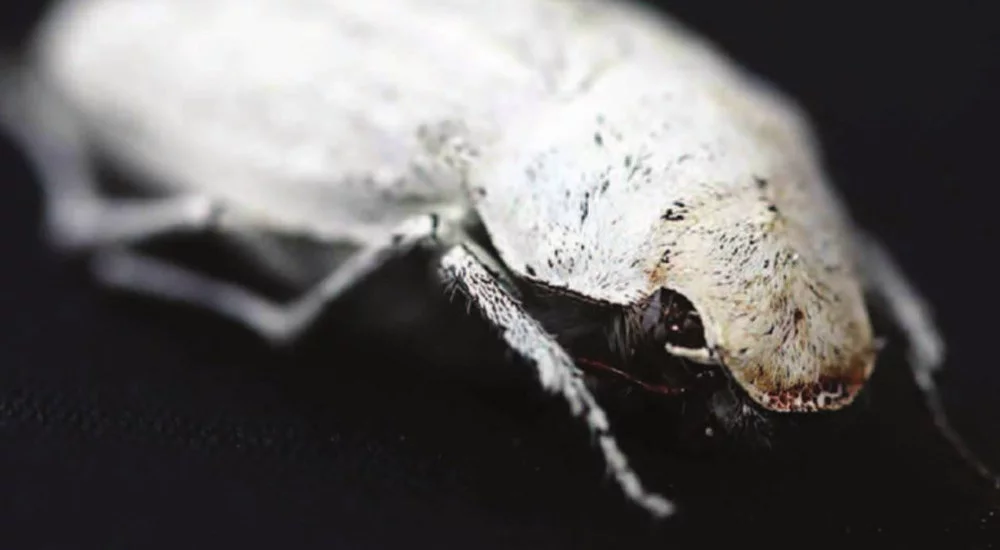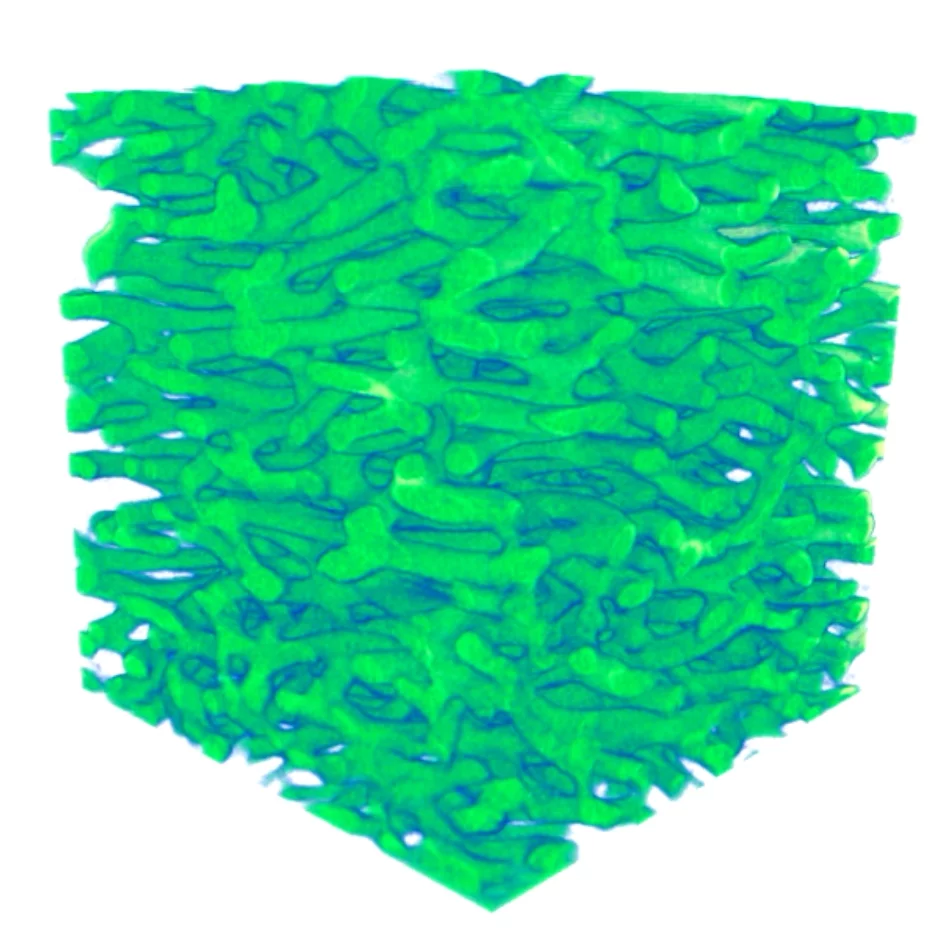Cyphochilus white beetles (see Fig. 1) have developed a complicated three-dimensional (3D) photonic structure on their wing scales in order to efficiently reflect white light. At the same time, this structure is very porous and is confined within a thin layer of about 10 µm, about one fifth of the thickness of ordinary white paper, which makes it very light and therefore advantageous to fly. Researchers of the University of Fribourg and their collaborators wanted to understand how this fascinating structure is optimized, for which they needed a faithful 3D image. However, conventional microscopy techniques providing enough spatial resolution such as electron microscopy required the sample to be cut for imaging consecutive slices, causing damage of the structure during the process.
The tOMography Nano crYo (OMNY) imaging system operated at the coherent small-angle X-ray scattering (cSAXS) beamline at the Swiss Light Source was the key instrument that allowed them to image a small volume of the sample for their investigations. This equipment can keep the specimen at a temperature of 90 K to minimize structural changes caused by radiation damage while scanning the sample with respect to the beam with a precision of about 10 nm, which was needed to acquire a 3D image of 28 nm resolution, as shown in Fig. 2, by ptychographic X-ray computed tomography [1]. This is achieved by an ingenious system based on differential optical interferometry compatible with sample rotation which had been already tested for radiation hard samples at room temperature [2].
Optical reflectivity simulations directly performed on the measured structure confirmed that the structure developed by this beetle was indeed optimized for an efficient reflection of white light while using as little material as possible. Indeed, increasing the size or thickness of the struts in the structure or stretching the entire structure did not improve the reflection efficiency significantly, while the opposite was clearly detrimental. Humans could now take advantage of this evolutionary-optimized structure for applications e.g. in the food industry.
References
[1] M. Dierolf et al., Nature 467, 436 (2010) DOI: 10.1038/nature09419[2] M. Holler et al., Sci. Rep. 4, 3857 (2014) DOI: 10.1038/srep03857
Additional information
Taking Color Inspiration from Evolutionary-Optimized White Beetle Wings, Advanced Science NewsContact
Dr. Ana DiazBeamline Scientist, Swiss Light Source
Paul Scherrer Institut
Telephone: +41 56 310 5626
E-mail: ana.diaz@psi.ch
Original Publication
Evolutionary-Optimized Photonic Network Structure in White Beetle Wing ScalesB. D. Wilts, X. Sheng, M. Holler, A. Diaz, M. Guizar-Sicairos, J. Raabe, R. Hoppe, S.-H. Liu, R. Langford, O. D. Onelli, D. Chen, S. Torquato, U. Steiner, C. G. Schroer, S. Vignolini, A. Sepe
Adv. Mater. 30, 1702057 (2018)
DOI: 10.1002/adma.201702057

